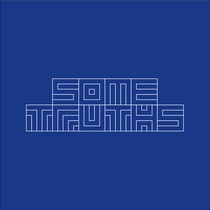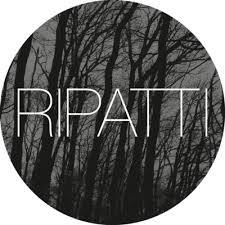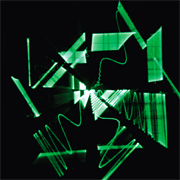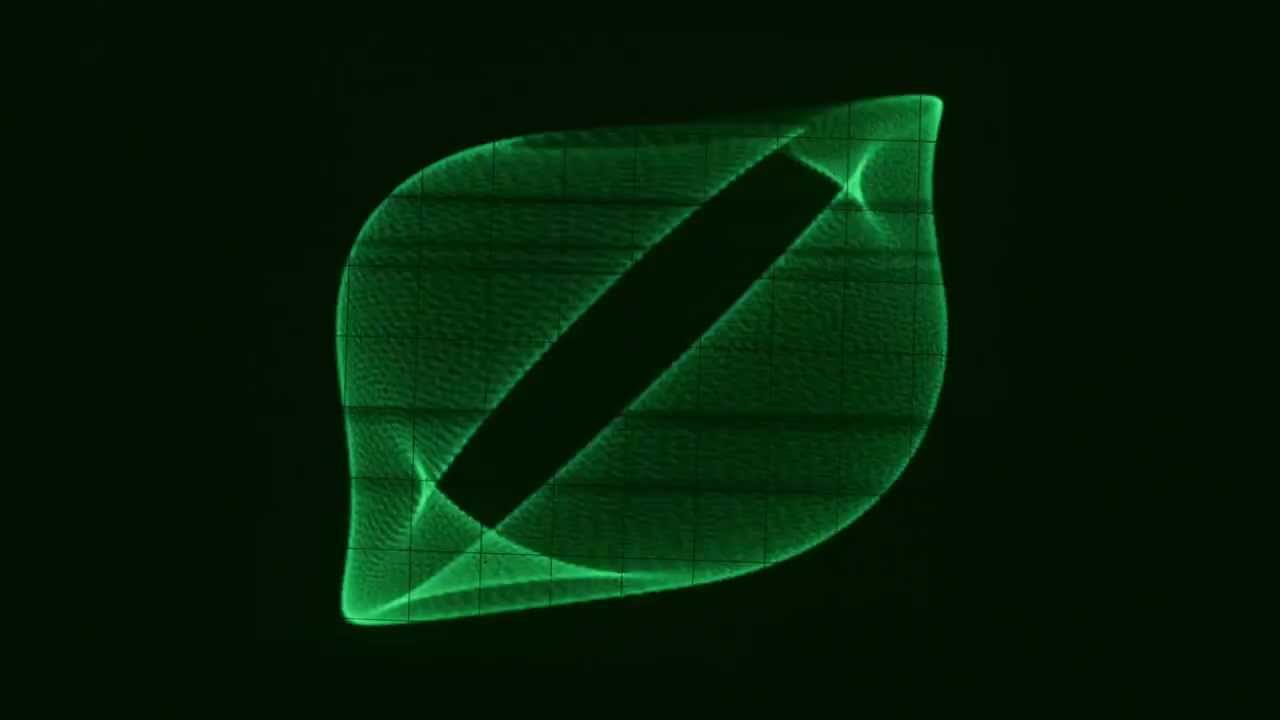Welcome to the spring 2014 edition of Hyperspecific, late as ever and brandishing a handful of shiny vinyl 12"s and a USB stick stuffed with gigabytes of new digital releases. Making up for lost time – this is the first edition of this column since late January, I believe – this column gathers some of the new music I’ve been most compulsively re-listening to in the last couple of months. Read on for journeys through your own mind, new excursions in Bristolian dancehall, and an emerging new club music force in London.
Bass Clef – Bugbranded
(Public Information)
Some Truths – Some Friends I Lost To Bedlam, Others I Abandoned There
(Mordant Music)

Although the reality may be far more prosaic (doesn’t that always end up being the case?), I always imagine his home studio in Hackney as a sort of modern day Black Ark, teeming with cables, odds and ends, piles of tape and esoteric pieces of equipment, all scrawled in code only decipherable by its creator. Listening to his music, from the gritty dubstep experiments he cooked up while still on the peripheries of the Bristol scene to his recent modular synth experiments, you visualise him busily in motion, flicking switches and turning knobs, following his whims to remould the music in real time. Combined with his cheekily evocative approach to aesthetic presentation and track titles, this tactile nature makes it easy to imagine Cumbers’ music as direct pathway to his personality – a sensation further heightened on his more recent improvised sessions as Some Truths, which are among his most free-flowing and meditative music.
After a quiet 2013 he’s hitting a purple patch right now, with a brace of releases of his own lined up for this year alongside a raft of new music from kindred artists through his Magic + Dreams label, including Ashley Paul and Peverelist. While being careful to avoid getting caught up in discussions of gear and process – which seem antithetical to the rave-inspired spirit in Cumbers’ music that demands you submit to sensation and lose yourself in the moment – it’s interesting to see how the modular synth has shaped this more recent work. Having started assembling one a few years back, given the already very hands-on nature of his music-making process it’s unsurprising he’d have taken to it swiftly. But beyond the technical foibles of the instrument, what’s striking is how much of a dynamic emotional range it’s opened up for Cumbers; unlike plenty of tiresomely over-complex modular music, in his hands it sweeps through a huge range of feelings and sensations, from the elation of his recent Acid Tracts EP (just reissued on vinyl via Alter), to the nagging ambiguities of his fantastic new Some Truths album for Mordant Music, Some Friends I Lost To Bedlam, Others I Abandoned There (memorably described by Baron Mordant in the accompanying text as "a basking shark of an album that gently filters the ill from the krill").
As well as being his most concise and focused Some Truths music to date, as you might guess from its title and track names referencing drugs and mental health, Bedlam feels like a particularly personal piece of work. In sound alone it’s a potent and highly psychoactive cocktail of a record. Its synthetic tones are so highly charged that they shed excess energy as hallucinogenic shimmer, as evidenced by opener ‘Too Much Bone In Yr Skull’, which lances to life with the immediate buzzing impact of a dentist’s drill pressed against your ear ossicles. The effect is heightened by Cumbers’ meshing of multiple melodies into disorienting Escher-like labyrinths; try and follow a single arc and you’ll swiftly, almost imperceptibly, be guided off course, and before you know it you’re hopelessly lost. The mood is lonely and occasionally outright unsettling, suggesting a solo wander through the vast empty hallways, chambers and vaults of some abandoned and long-forgotten building (or, perhaps, the corridors of your own mind) with the modular’s motion detector sonar pings echoing out into space ahead the only indicator of what fresh hell might lurk around the next corner.
Nonetheless, there’s always a tangible joy to Cumbers’ music-making, and Bedlam is equally life affirming in its clear pleasure in exploration for its own sake. It was made on the same gear and in the same sessions as the recent Bugbranded EP; having borrowed a BugBrand modular system (the invention of Bristol’s Tom Bugs, whose own experiments were recently a surprise release on Omar S’s FXHE label), both records were made in a prolific few days of recordings. But where Bedlam broods, Bugbranded soars, with the modular’s warping tones and fractal melodic spray reimagining acid house as fairground-esque sound and light overload. Here he seems content to allow the drum machine’s steady motion to be his guide, holding his wanderings in check and shielding him from the shady creatures that still lurk around the peripheries, behind neon signs, inside toll booths and beneath the wooden slats of the rollercoaster.
Sudanim – The Link
(HER Records)
Cyphr – ‘Brace’ / ‘Gloss Finish’
(HER Records)
It’s testament to how crowded the musical playing field has become in the few short years since 2007 or so, that it can now feel genuinely tough to figure out where to direct your energy and attention. South London’s HER Records crew are a neat example; the three digi-only EPs they’ve put out so far in 2014 are great dance music and loaded with future potential, and back in 2008 you could easily imagine them attracting similar breathless column inches as fluoro-dubstep third-wavers like Joker and Guido. Were there not so much competition for our ears in 2014’s cluttered economy of attention, I daresay they would have by now. Equally, however, many younger artists at the moment are deliberately sidestepping the ‘spray your presence all over the internet’ route towards gaining listeners – wisely aware that what goes up fast may well come falling down just as swiftly – and the HER crew seem perfectly happy focusing on their own development and offering us regular glimpses. Which is just fine by me; Miss Modular’s Reflector Pack EP from earlier this year crisply folded itself into stylish, hard-angled and many-sided shapes, and both Sudanim’s The Link and Cyphr’s brand new ‘Brace’ wring further ideas from a similar template.
The overall aesthetic is what you’d broadly call post-Night Slugs, clearly inspired (as many of the ‘Sluggers themselves have been) by Jam City’s devilishly futuristic chromescapes on Classical Curves, but drawing extra inspiration from the arch-backed poise of US artists like MikeQ, the digi-shimmer of the producers surrounding Fade To Mind, and the UK’s new adventures in Oneohtrixian eski-ambient. In short, pleasingly open in scope, something that shines through especially in HER co-founder Sudanim’s The Link, whose best tracks stage epic collisions in profound digital silence, where sing-song synthetic voices, welts of bass and whipcrack drums do brutal staccato battle. ‘Midrift’ is a favourite, reprising as it does the playfully cartoonish vibe of the best UK funky skank tunes but replacing their organic building blocks with adamantium. As ever with such a highly stylised new aesthetic, one risk with this currently blossoming post-Jam City sound is that the sound itself – those luscious, tingly-frosty textures and kung-fu drum swoops – swiftly becomes its raison d’etre, and that it becomes a matter of style (but such style!) over substance. As with the sparse, semi-ambient grime of Mr. Mitch et al, which faces similar possible issues, it remains to be seen how that will play out. For the moment, however, the HER Records material possesses that exciting searching feeling that’s so often characteristic of budding sounds in their infancy – the sense that the weight of ideas currently outstrips the producers’ ability to lay them slickly onto tape, leading to music that burns with excess energy.
Aurora Halal – Passageway
(Mutual Dreaming)
Passageway is that rare thing: a new techno 12" that can quite happily exist as standalone, stuffed with enough ideas to compel repeat sit-down listens. A pretty standard requirement for a release whatever genre, you’d have thought, but in practice there’s plenty of just-fine techno music that only really comes to life on the dancefloor and in the mix. New York based Aurora Halal is the organiser of the Mutual Dreaming parties, which take place in various loft-type venues around the city and involve audiovisual and immersive elements, as well as having been one half of the 100% Silk signed Innergaze a couple of years back (alongside now L.I.E.S associate Steve Summers). But this debut solo 12", which arrives ahead of an upcoming collaborative release with Ital, sits neither alongside the warm scuzz of the Silk sound nor the ragged scuzz of Ron Morelli’s label. Instead it’s rich and intricately layered, prioritising immersion over impact. Its charms creep up similarly slowly, with elements typically swimming their way through an echo chamber’s worth of hollow reverb: woody, tightly swung drums on ‘Hazy G’, sinuous whispers on ‘Disassociate’ and, on the exquisite ‘Overpass’, Mario Kart-esque shuddering blips that dissipate with studied patience. But it’s the mood, reminiscent of the lush, unabashedly romantic futurism of the early Autonomic drum & bass records, that lingers in the mind long after the record’s come to a stop.
Ishan Sound – ‘Forward’ / ‘Koma’
(Zam Zam Sounds)
Ishan Sound – Namkha
(Tectonic)
Sound system music is at the heart of the Young Echo collective, with the group’s members drawing inspiration from their home city’s groundbreaking dubstep mutations last decade. But the lineage runs deeper still, with Bristol’s long-running reggae community having provided potent bassbin fuel for several successive generations of local musicians. Young Echo feel like a distinctly internet-age interation of that ongoing dialogue within the city, in the way that they recombine those formative local influences with wider currents in dance and quote-unquote experimental music; see Vessel and Sam Kidel’s increased use of modular synths and hand-built instruments, or the cavernous improvised voyages the group craft as Killing Sound (whose imminent debut EP on Blackest Ever Black is excellent). So the collective have found themselves in the otherwise unlikely position of being critically in vogue, quite an achievement considering their patient and ever low-key approach to their music, and their tendency to base radio shows and nights around dub and reggae. Which is great, especially if it leads to events like the collective’s intimate recent takeover of Plastic People, or to wider audiences taking notice of the gorgeous, wraithlike dub/dancehall of Young Echo member Cris Ebdon, who forms one half of duo Zhou and writes solo tracks as Ishan Sound.
Ebdon’s dubplate-packed set was the highlight of the Plastic People show, with his own highly individualised melodic sensibility – you can spot an Ishan tune from a mile off – making his selections feel like variations on a central theme, with each track’s greenish synthetic pipe melodies knotted into delicate arabesques. That ear for harmonic intricacy is a defining quality of his music: take ‘Namkha’, the lead track of his new EP on Pinch’s Tectonic label, where reedy motifs sparkle through the music’s high-end and play off in delicious contrast to the chest-rattle rhythms beneath. Like some recent neo-grime, which often seems to consist more of space than actual sonic matter, it’s an unlikely banger possessing some serious wallop – in London, it provoked an excitable enough reaction to spur Amos Childs (Zhou’s other half) to swiftly lean across the decks and rewind it with a grin. On the Tectonic 12" it’s paired with an alternate version that replaces crystalline grace with textures that cut like a buzzsaw. It’s that tug-of-war between refinement and rawness that makes the Ishan Sound material so beguiling. Everything is at once ramshackle yet beautifully executed: drums clatter and wheeze but remain funky; melodies are eerie despite sounding hand-played from a knackered old toy Casio keyboard. His ‘Forward’ 7", released late last year on US digi-dub label Zam Zam, brings those characteristics to bear on a pair of atmospheric, shuffly floor tracks, through which disembodied chants and upstruck chords drift like phantoms through a crystallised forest.
Evian Christ – Waterfall
(Tri Angle)
Listening to Skrillex’s recently released debut album recently, most striking wasn’t the sheer burned-out-attention-span maximalism of the thing, though that certainly remains a core characteristic of the EDM megastar’s music. No, what impressed itself most upon me was how paradoxically thin-sounding the entire record is despite its unwavering intensity, where by insisting upon pushing everything to the forefront of the mix and whacking that damnable metallic groan ‘n’ wobble everywhere he frequently manages to iron dead flat the music’s contours. Listening to it alongside something like Evian Christ’s new EP there’s no comparison, which seems perhaps strange considering the relative size of venues each artist is accustomed to playing. Waterfall is impressive, and I say this as someone who was pretty skeptical about the furore around Evian Christ’s earlier music. It feels like big room dance music – opener ‘Salt Carousel’ alone boasts ton-ton bass blasts (apparently sampled from a guitar overloaded with distortion), garbled chipmunk voices and a skyscraping melodic figure, all above that ubiquitous southern hip hop swagger. But it doesn’t bow down to the usual tendency whereby dance music for large spaces becomes progressively less detailed and compositionally interesting, as audiences become more varied and the contours of the venue put paid to intricacy.
Instead, beneath their frequent in-your-face abrasiveness – ‘Propellor”s walls of bass feel like being blasted headlong into concrete – these tracks teem with extra detail that’s not merely incidental to the music but actively contributes to its momentum. As a result they possess an unusual depth of field compared to other producers working within ostensibly similar genre space. Best, and hopefully a sign of things to come, is ‘Waterfall’, which moulds itself into several distinct iterations in four minutes, and opens in a breezeblock barrage that suggests Emptyset gone stadium; later it pulls itself apart like an exploded architectural diagram and reforms, first as intimate piano interlude, then violent shower of atonal rhythmic noise. As a related aside, Waterfall also marks an impressive opening 2014 statement for a label – Tri Angle – that may well come into their own this year; recent and upcoming releases from Fis and SD Laika, and Vessel’s live performances of material from his imminent second album, tap into a shared seam of bodily sound system music that unites many of the disparate stylistic tendencies the label has indicated toward in the past.
Vladislav Delay – Ripatti 03
(Ripatti)

Clark – Superscope
(Warp)

A Made Up Sound – Night Owl
(The Trilogy Tapes)
Asusu – ‘Velez’ (A Made Up Sound Remixes)
(Livity Sound)
When on his most contrary form, usually while operating as A Made Up Sound, Dave Huismans makes the most gloriously strange peak-time bangers. By all rights they shouldn’t work, these anarchic configurations of grubby, breakbeat-chopped drums and mangled, timestretched percussive motifs that appear bound by nothing more than a few frayed strands of elastic and a whole lot of good will. Yet somehow, instead of turning the music into an overloaded mess, the potential energy transferred along these tripwire bonds as they stretch and warp – as drums pull roughly apart from one another by minute intervals before slamming back into place again with renewed force – makes his tracks feel like perpetual motion machines: ever-shifting, carefully balanced, their energy rebounding from corner to corner in the mix and dragging you into the vortex in a joyful, sweaty heap. Or, to put it another way, while there’s been plenty of noise in the last year or so about the re-appropriation of jungle aesthetics in techno-rooted music, Huismans has been building upon and reframing jungle’s rhythmic psychedelia – and doing it better than almost anyone else that’s followed – for several years now. Which is one of the reasons why he always ends up in Hyperspecific each time he’s got something new in the shops.
I’m currently infatuated with the first of his two remixes of Asusu’s ‘Velez’, released as part of Livity Sound’s remix 12" series: it’s properly dazzling, a sprawling eight minute chug that turns the original’s brittle helicopter rattle warm and dewy eyed. (And which also, for those eagle of ears, riffs on classic Warp; I swear there’s an LFO bleep or two floating about in there.) The Night Owl EP for Trilogy Tapes sidesteps into wilder territory, kindred texturally to many of the other artists assembled in loose orbit around Will Bankhead’s label. ‘Fortress (The Hague, 2005)’, reprises and adds extra splatter to those nasty, jagged whirrs that made 2011’s ‘Take The Plunge’ such a nerve-wracking delight, while ‘Caustic Network’ is the sort of mucky and penetrative basement acid that makes a night spent dancing entirely to sub-115bpm music sound like the most enticing thing in the world.
Highlight ‘Situation’ also dismantles another popular current myth: that music that’s been live recorded on banks of hardware is automatically interesting ’cause it’s, y’know, raw and spontaneous and stuff. Its second half – following the emergence of a gloriously unexpected Bowie sample that’s quickly mangled and chucked about in the blender – is as rough and untreated as they come, all squashed half-melodies that sound as though Huismans is haphazardly jabbing at blocks of notes on his keyboard. Except, of course, he’s not: it takes care, attention and clear ideas to make music this muddy and weird so stone cold funky.
Hyperspecific will return next month with the next fresh batch of electronic music off the never-ending conveyor belt



